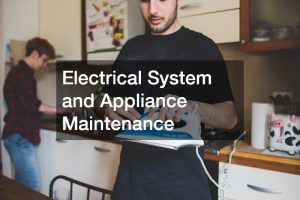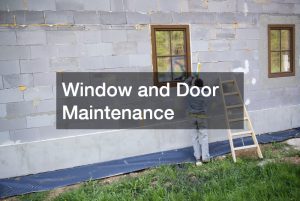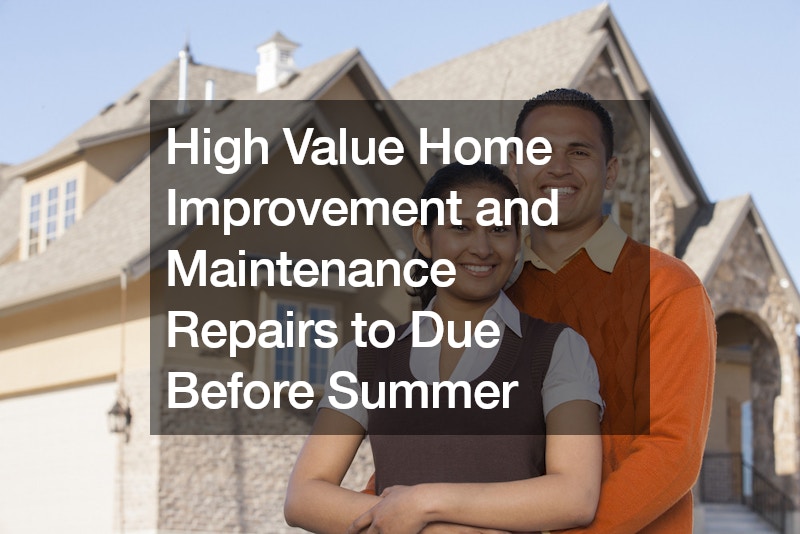Introduction
Maintaining your home is paramount for safeguarding your investment and ensuring a cozy, secure living environment. Regular building maintenance helps retain the property’s value, preventing costly unexpected repairs and ensuring a safe space for your family. As a critical aspect of homeownership, purposes range from enhancing the visual appeal to implementing safety measures.
Our extensive building maintenance guide provides homeowners with actionable strategies to streamline maintenance tasks. By outlining a systematic approach, we’re offering a practical path forward for consistently preserving and improving your home. This guide introduces myriad aspects of maintenance that span structural checks, routine repairs, and systems inspections.
Particularly for those new to the task, this guide proves invaluable by demystifying essential maintenance undertakings. Homeowners can expect expert insights, tips, and tricks to cultivate a routine that naturally integrates into daily life. With the right approach, maintaining your home can become a rewarding experience rather than a daunting one.
1. Create a Building Maintenance Checklist
Creating a building maintenance checklist is the first step toward organized upkeep. Establishing a structured schedule for both yearly and seasonal maintenance tasks helps ensure no aspect of your home is overlooked. By dividing tasks into seasonal segments, it becomes easier to manage and address recurring needs unique to each time of year.
Tracking and documenting completed tasks is essential in home maintenance. A record helps homeowners keep track of what’s been done, avoid duplicate efforts, and identify emerging issues that might require professional intervention. It provides a historical perspective that reveals the progress over time within various maintenance categories.
Our building maintenance guide encourages using a standardized home maintenance tracker. Such a tool can alleviate the complexities involved in organizing multiple tasks and ensure you’re consistently on top of crucial upkeep activities. Maintaining a digital log becomes particularly advantageous as it can be easily accessed and updated from anywhere.
2. Roofing and Gutter Maintenance
Roofing and gutter maintenance are critical facets of the building maintenance guide you shouldn’t overlook. Regular roof inspections can help spot potential problems like leaks before they turn into major repair issues. This proactive approach includes checking for missing shingles, damage, and gutter blockages and ensuring water drainage is properly managed.
Preventing water damage starts with keeping gutters clean and functional. Leaves and debris can quickly accumulate, causing water to pool around your roof and foundation, leading to leaks and damage. Regular cleaning is necessary, especially during the fall and spring, to ensure that water can flow freely through the gutter system.
If signs of minor damage are noticed, such as cracked or missing shingles, small punctures, or leaks, addressing them promptly is critical. Homeowners need to know the point at which professional repair services are required to handle more significant issues. This part of our building maintenance guide ensures your roofing system continues to function effectively, warding off related complications.
3. HVAC System Maintenance
An efficiently working HVAC system is vital for both comfort and energy management in your home, making it an integral component of the building maintenance guide. Routine inspections can identify potential issues and ensure the system operates optimally, reducing the risk of unexpected breakdowns. Ensuring regular air filter replacement can boost energy efficiency considerably.
Your home’s indoor air quality heavily depends on the performance of the HVAC system. Clogged or old filters reduce the system’s efficiency and can lead to potential allergens being circulated around the home. By establishing a regular schedule for filter changes, you promote cleaner air and more efficient energy usage.
Incorporating professional maintenance services for your HVAC system further enhances its longevity and function. Trained professionals are equipped with the expertise to recalibrate components, clean critical system parts, and identify wear that the average homeowner might overlook. Scheduling regular service appointments is a valuable step in securing your home’s comfort year-round.
4. Plumbing System Maintenance
Plumbing failures can result in extensive damage and repair costs, so routine checks should be a crucial aspect of your maintenance checklist within the building maintenance guide. Frequently inspecting pipes, faucets, and toilets for leaks can prevent water damage and contribute to water conservation efforts. Small leaks, when left unnoticed, can escalate into major problems.
Preventive maintenance is key when dealing with drain systems too. Introducing small changes, like using drain screens and adopting eco-friendly cleaning practices, can significantly lower the risk of clogs. Regular cleaning of drains using non-corrosive materials ensures a smooth flow and extends the lifespan of your plumbing fixtures.
Small leaks or blocked drains not only waste water but can create conditions conducive to mold growth and structural compromise. Thus, systematic evaluation and repair strategies, as outlined in our building maintenance guide, can save you from the inconvenience and expense of severe plumbing issues in the future.
5. Electrical System and Appliance Maintenance

Regular checks on your electrical system and appliances ensure safety and efficiency. This critical segment in our building maintenance guide emphasizes the need for routine assessments of smoke detectors, electrical outlets, and major appliances. Ensuring these elements function reduces the risk of electrical fires and prolongs appliance life.
Testing smoke detectors is a straightforward but vital process in maintaining household safety. Over time, electrical outlets can show signs of wear or might not provide a secure connection, indicating potential hazards. Addressing these issues promptly is essential for maintaining a safe and secure living environment.
Appliance maintenance plays an integral part in maintaining home efficiency. Regular upkeep, including cleaning and minor repairs, can help avoid major performance issues. This proactive approach recommended in our building maintenance guide ensures appliances like refrigerators, dishwashers, and washing machines operate at peak efficiency and avoid untimely breakdowns.
6. Exterior Home Maintenance
The building maintenance guide underscores the importance of regular inspections of your home’s exterior. Routine checks for surface cracks, peeling paint, and window damage help maintain your home’s structural integrity and curb appeal. Staying vigilant about external wear reduces larger repair needs in the future.
Maintaining efficient drainage and tidy landscaping contribute significantly to your home’s foundation health. Poor drainage can lead to water pooling around the foundation, causing damage over time. Adequate landscaping maintenance provides additional support, preventing potential water-related problems.
By incorporating exterior maintenance into your regular routine, you enhance the durability of your home’s outer structure. Our guide stresses the importance of keeping an active eye on these elements as part of a comprehensive maintenance approach that safeguards against both immediate and long-term damage.
7. Foundation and Basement Maintenance
Foundation and basement upkeep is a vital part of the building maintenance guide that ensures the overall health of your home. Being alert to signs of foundation issues—such as cracking walls or ill-fitting doors—allows for early intervention. Regular professional inspections can often prevent minor problems from escalating into drastic repairs.
The basement, prone to moisture accumulation, necessitates preventative measures as well. Sealing walls and routinely checking for leaks is important to combating dampness and preventing mold growth. Efforts in basement waterproofing contribute significantly to minimizing structural impact from moisture.
The building maintenance guide suggests installing sump pumps and dehumidifiers as essential tools in managing moisture levels. These solutions, coupled with regular checks, provide peace of mind, ensuring that basement spaces remain dry and suitable for storage or living purposes without risk of water damage.
8. Window and Door Maintenance

Windows and doors contribute significantly to your home’s energy efficiency and security. Regular inspections for leaks, drafts, and seal effectiveness are prominent points in the building maintenance guide. Replacing caulking, and worn-out weatherstripping can significantly enhance thermal efficiency.
When minor damages are identified in windows or doors, timely repairs can extend their life and maintain energy efficiency. However, there comes a time when replacement becomes the most viable option. Recognizing these signals ensures optimally functioning windows and doors, which is essential for robust security and minimized energy costs.
Proper sealing and insulation are emphasized as primary steps in enhancing your home’s overall efficiency. Regular upkeep in these areas maintains both the financial and environmental benefits of reduced energy consumption, as articulated in our comprehensive guide.
9. Pest Control and Prevention

Integrating pest control into your building maintenance guide is crucial to preventing infestations that pose both health and structural risks. Sealing entry points, repairing screens, and removing potential food sources minimize pest attraction. Such proactive approaches can dramatically reduce the possibility of subsequent infestations.
Routine pest inspections by certified professionals ensure no hidden infestations go unchecked. Early detection and subsequent treatment can prevent minor pest issues from snowballing into major dilemmas, putting your home and family at risk.
The building maintenance guide advocates for a blend of natural deterrents and professional solutions to maintain a pest-free environment year-round. Comprehensive pest control lays a foundation for a safe and serene household, lessening the chances of experiencing health hazards linked with unwanted critters.
10. Energy Efficiency Improvements
Our building maintenance guide concludes with a focus on energy efficiency, emphasizing insulation and weatherproofing improvements. Proper insulation can significantly lower utility costs, improving the comfort level whilst reducing the ecological footprint of your home. Investigating cold spots and ensuring continuity in insulation layers can lead to noticeable cost reductions.
Consider upgrading to energy-efficient lighting and appliances. These investments may initially incur higher costs; however, the long-term savings and environmental benefits are substantial. Improvements in technology continually provide more efficient options that reduce overall consumption.
This section of the building maintenance guide articulates the integration of energy-efficient solutions within regular home maintenance routines. By adopting sustainable solutions, homeowners contribute to global conservation efforts whilst simultaneously achieving tangible financial benefits.
Conclusion
In summary, the building maintenance guide equips homeowners with the essential knowledge to maintain and enhance home value. Proactive maintenance serves as a foundation for reducing unexpected expenses and ensuring a safe living environment. Through a structured and careful approach, improved home value and condition are realistic outcomes.
Taking a detailed and strategic stance in building maintenance increases the lifespan of your property’s systems and components. A routine checkup, when incorporated into daily life, shifts maintenance from being a burden to an empowering aspect of property management.
This building maintenance guide represents a comprehensive toolkit designed to simplify and streamline essential home care tasks. By following this guidance, homeowners will cultivate a deeper understanding of maintenance benefits, consistently achieving an optimal living environment.

